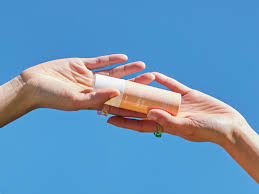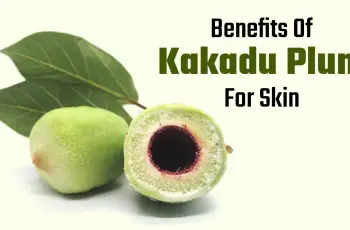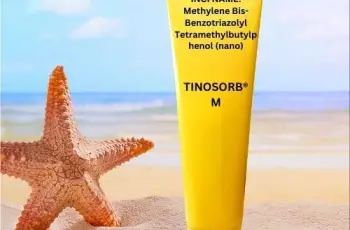
Here’s Why There Is No Such Thing As A ‘Healthy’ Tan
Sunkissed skin may seem attractive, but we’re here to tell you the truth: there is no such thing as a healthy tan. That glowing, bronzed look? It’s your skin in distress.
Viciously applies sunscreen to all exposed areas.
^Good! So you should! Daily!
Before you go defending your vitamin D-obsessed friend, arm yourself with some cold, hard facts. To make things easier, we turned to Dr. Annika Smith, Consultant Dermatologist at The Skin Hospital Darlinghurst.
“Tanning is essentially a sign of distressed skin,” says Dr. Smith. “It’s the skin’s response to ultraviolet radiation from the sun.
When the skin gets damaged, it produces melanin – the pigment responsible for skin color, and that darkens the skin.”
This damage doesn’t go away. It builds up over time, starting from the very first tan. Whether incidental or intentional, each exposure to UV light contributes to skin damage, leading to genetic mutations.
In turn, this increases your risk of developing skin cancer.
Put simply, tanning is a short-term decision with long-term consequences. Think of it like choosing to skip brushing your teeth or eating a bag of musk sticks for breakfast.
The immediate effects of tanning may include skin discomfort and sunburn. But as time goes on, the risk grows: premature aging of the skin, wrinkles, pigmentation, and even skin cancer, which is life-threatening.
Australians generally understand the dangers of the sun, considering how fierce it can be year-round. However, there is still work to be done.
One Australian dies from melanoma every six hours, and one is diagnosed with melanoma every 30 minutes. This type of cancer is the most common in Australians aged 20 to 39.
But let’s say you weren’t able to avoid the sun during peak UV hours. Maybe you didn’t reapply sunscreen correctly, and now you’re feeling the burn. Here’s what to do: “Hydrate,” advises Dr. Smith. “Stay out of the sun, and keep your skincare routine simple. Moisturize, avoid actives that could dry or irritate the skin, and use lightweight products with soothing ingredients.”
Most importantly, incorporate sun protection into your daily routine. It’s essential for long-term skin health.
To truly protect yourself, you need to do more than just a couple of things. You need to tick all the boxes.
SPF 50+ broad-spectrum sunscreen, a hat, protective clothing, sunglasses, seeking shade, and avoiding sun exposure in the middle of the day are all part of the equation.
“Sun protection can prevent most skin cancers,” says Dr. Smith. “At the end of the day, prevention is better than cure.”
It’s also essential to know your skin and understand your risk of developing skin cancer. Dr. Smith recommends discussing your risk with a GP or dermatologist and setting up a regular skin check routine.
“Get familiar with your skin, and monitor for any changes. Early detection is the best chance for a cure.”
Look for moles and freckles that change in size, shape, or color. A new spot that stands out – the “ugly duckling” – might be a clue that something’s wrong, possibly melanoma.
Feeling adequately spooked? Sorry (not sorry). We’re not messing around when it comes to your skin health.
Let’s dive deeper into why tanning isn’t just harmful in the long term but also how your body responds to UV radiation. Understanding the process can help demystify the danger.
When your skin is exposed to UV light, the radiation triggers a defensive response. Your skin cells start to produce melanin to protect deeper layers of your skin.
The production of melanin is essentially your body’s attempt to shield itself from further damage.
While this might seem like a natural defense mechanism, the truth is that this response is an indication of harm. It’s a sign that your skin has been subjected to dangerous radiation.
The darker your skin becomes, the more melanin is being produced. But this darkening process isn’t a protective miracle. It’s the skin attempting to limit additional damage.
This is why even a tan from a day at the beach or a few hours outside should be considered a warning. It’s not a sign of health or vitality; it’s a symptom of injury. And this injury isn’t just cosmetic.
The long-term damage can lead to irreversible changes to your skin, including mutations in your DNA.
These mutations can increase the risk of cancerous cells developing, particularly the deadly form known as melanoma.
Melanoma is an aggressive form of skin cancer, and it’s one of the leading causes of cancer-related deaths worldwide. It’s highly linked to excessive UV exposure, whether through tanning beds or long sun exposure.
And despite the growing awareness around sun safety, skin cancer rates continue to rise.
This underscores the importance of sun protection. Sunscreen, while often seen as a preventive measure, isn’t just for those long days spent outdoors.
Even on cloudy days, UV rays can penetrate the atmosphere and damage your skin. UV radiation doesn’t care if it’s sunny or overcast. That’s why daily sun protection should become second nature.
Dr. Smith strongly advises that we incorporate broad-spectrum sunscreen into our everyday skincare routines, no matter the season or weather. SPF 50+ is the bare minimum recommended for effective protection.
Broad-spectrum means it covers both UVA and UVB rays, which are the primary culprits behind skin aging and cancer.
But sunscreen is just one part of the equation. Protective clothing is just as essential. Hats, sunglasses, and long-sleeve shirts can help reduce direct exposure. When outdoors, seek shade whenever possible.
The sun is at its harshest between 10 a.m. and 4 p.m., so it’s best to avoid being directly under it during these hours.
If you’re lucky enough to live in a location where the sun is a constant threat, like Australia, staying vigilant about sun safety becomes even more crucial.
Australians are well aware of the dangers of the sun, and yet, the statistics remain alarming. As mentioned, one Australian is diagnosed with melanoma every 30 minutes.
This figure should serve as a stark reminder that tanning is never worth the risk.
Even if you believe you’re immune to sun damage or have naturally darker skin, it’s important to recognize that no one is completely safe from UV radiation.
While people with darker skin may have some built-in protection due to higher melanin levels, they are still at risk for skin damage and cancer.
In fact, some forms of melanoma are more difficult to spot in people with darker skin tones, which is why regular checks are still vital.
We need to shift our mindset. Tanning isn’t a beauty standard. It’s a sign of skin injury. Healthy skin should be smooth, clear, and protected from the sun’s harsh rays.
If you notice any changes in your skin – whether a new mole or one that seems to be evolving – get it checked by a professional as soon as possible.
Incorporating sun protection into your routine can be a simple yet effective way to prevent the long-term consequences of UV exposure.
You don’t need to avoid the sun entirely, but responsible exposure and proper protection can significantly reduce your risks.
So, next time you’re tempted to get that golden glow, remember: your skin is your body’s largest organ, and it deserves to be protected.
Your best glow comes from healthy, nourished skin—not from damage caused by UV radiation.
Ultimately, making sun protection part of your daily life isn’t just about avoiding skin cancer.
It’s about preserving your skin’s health, preventing premature aging, and ensuring that you enjoy your life with radiant, healthy skin for years to come.
So, please, let’s retire the idea of the “healthy tan.” Instead, let’s embrace the healthiest glow of all: a skin that’s protected, hydrated, and well-cared-for.


